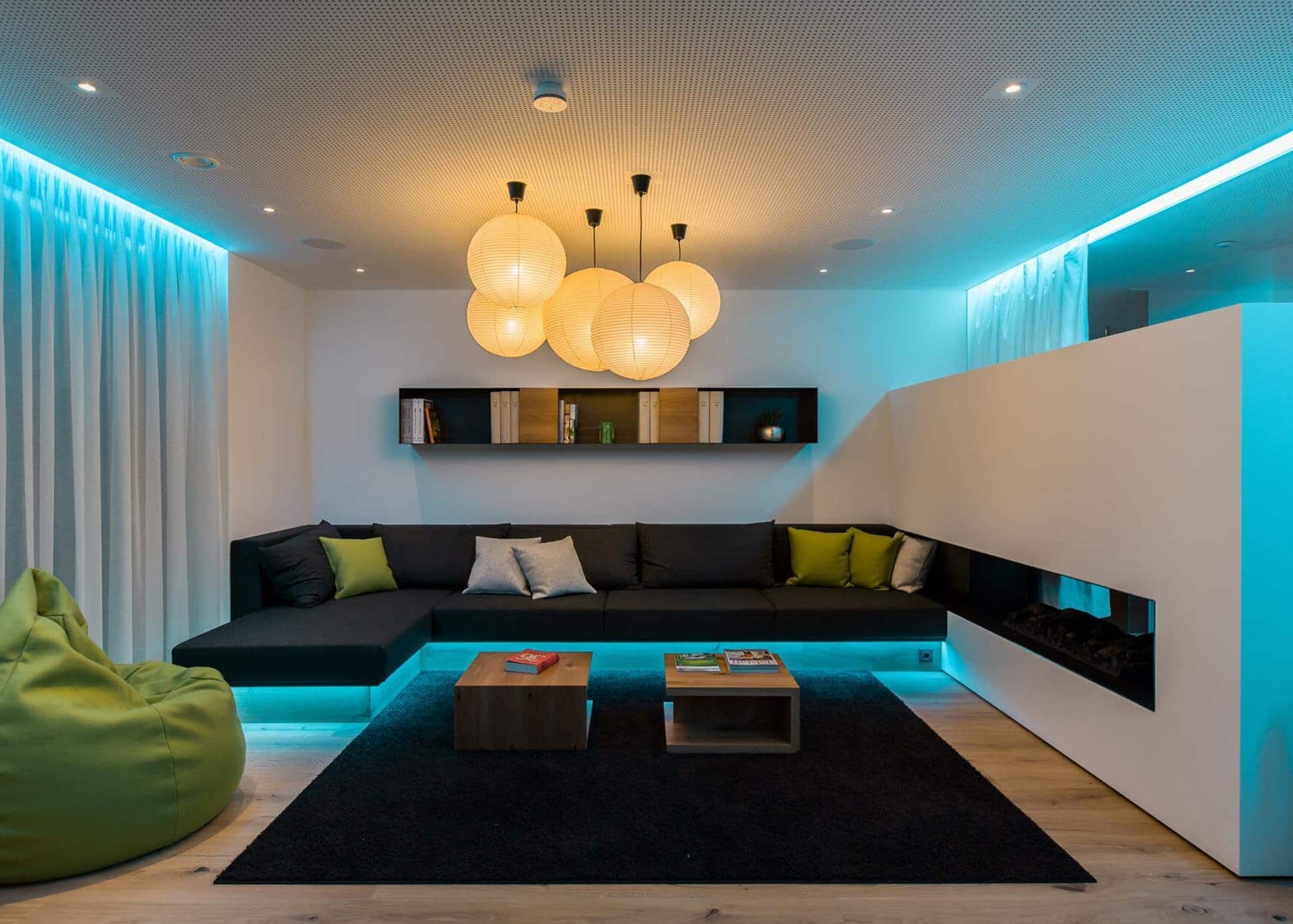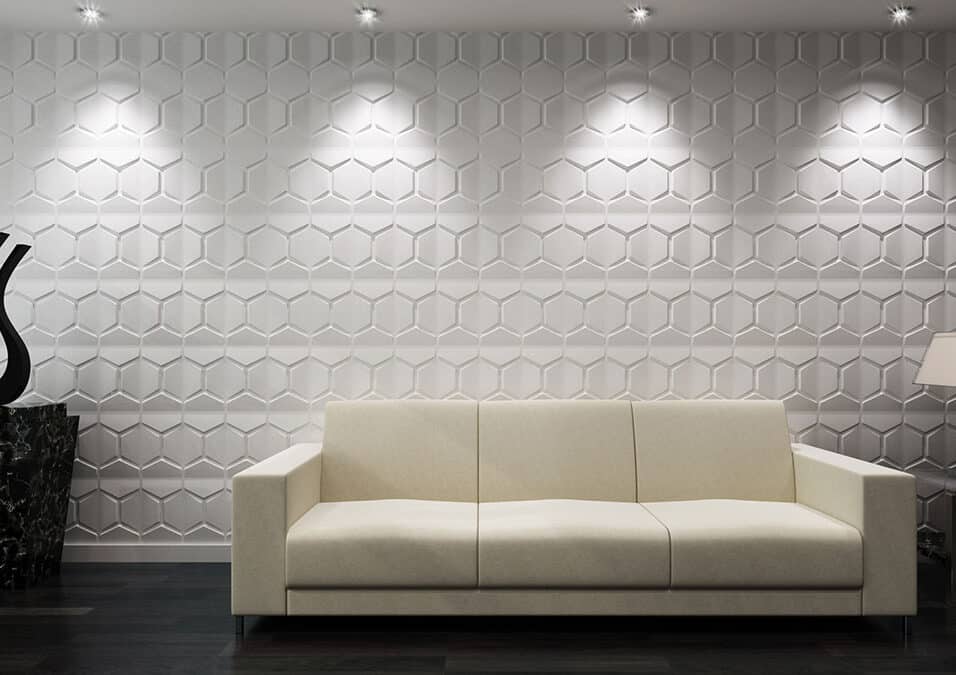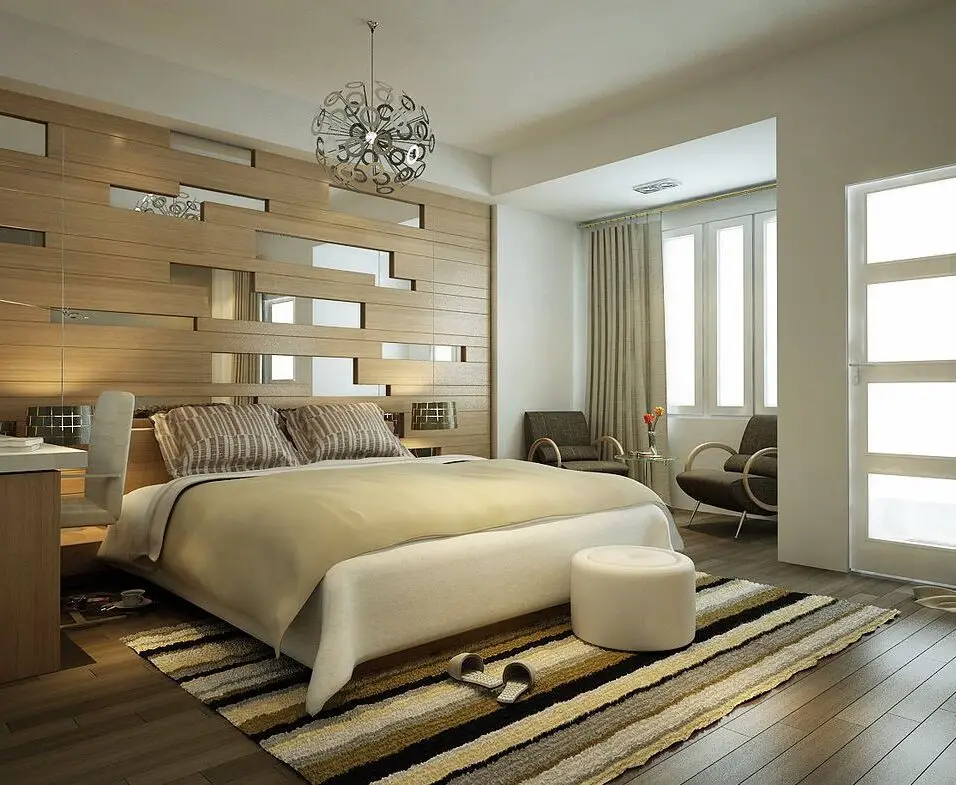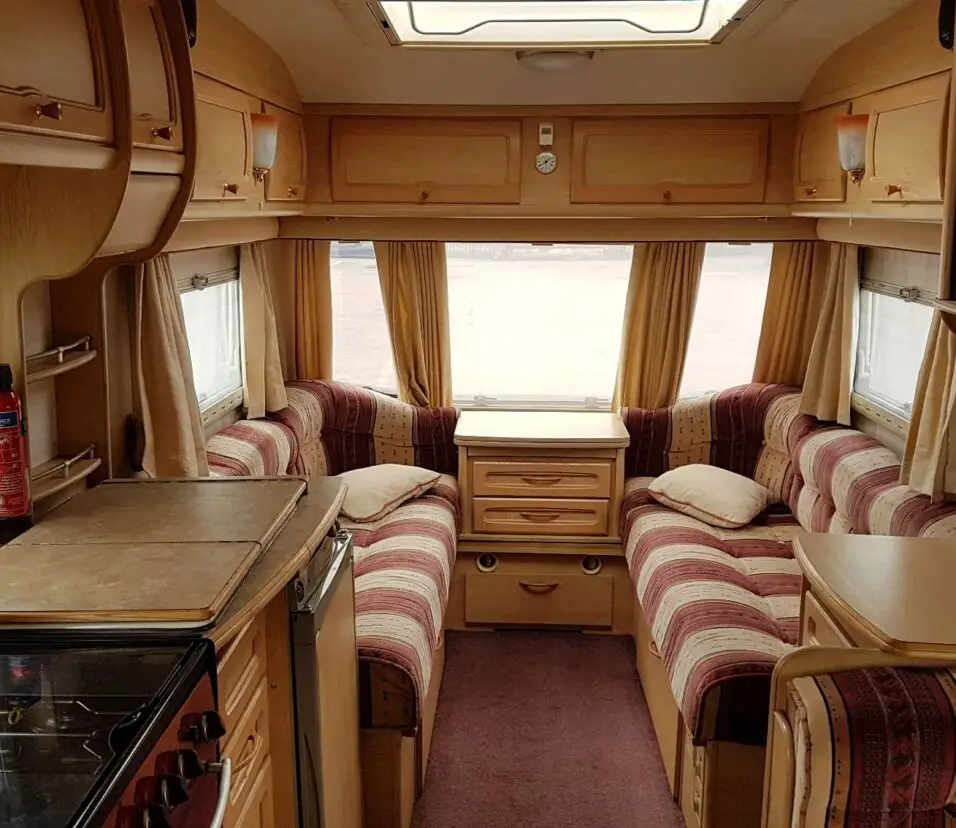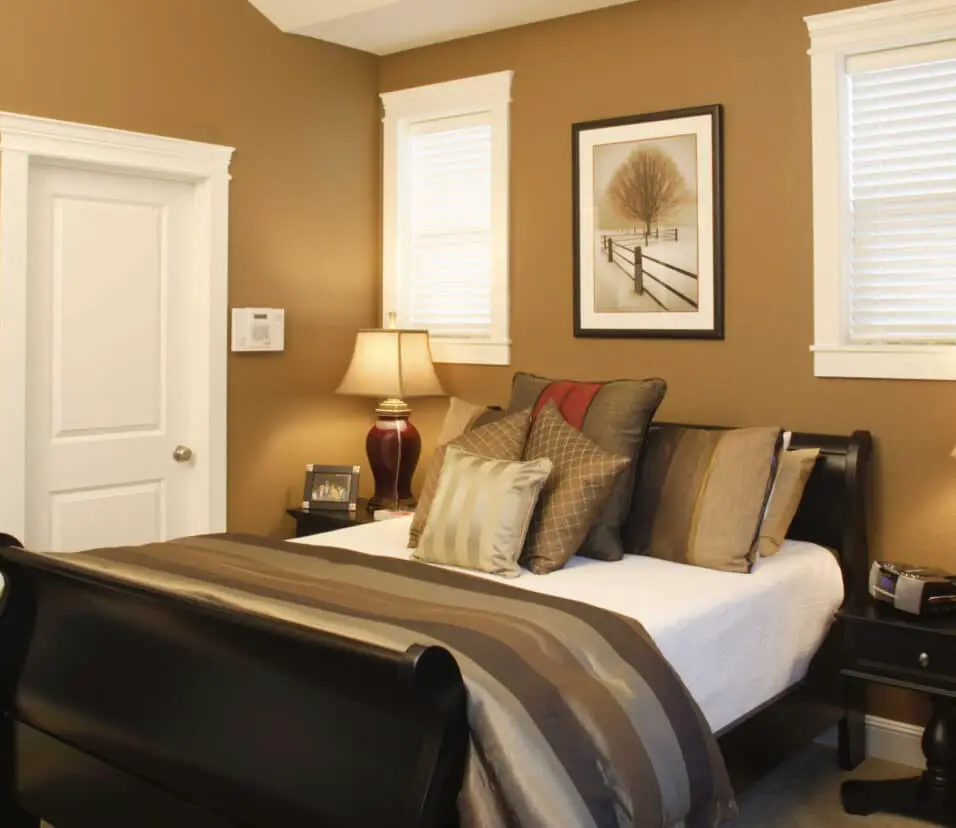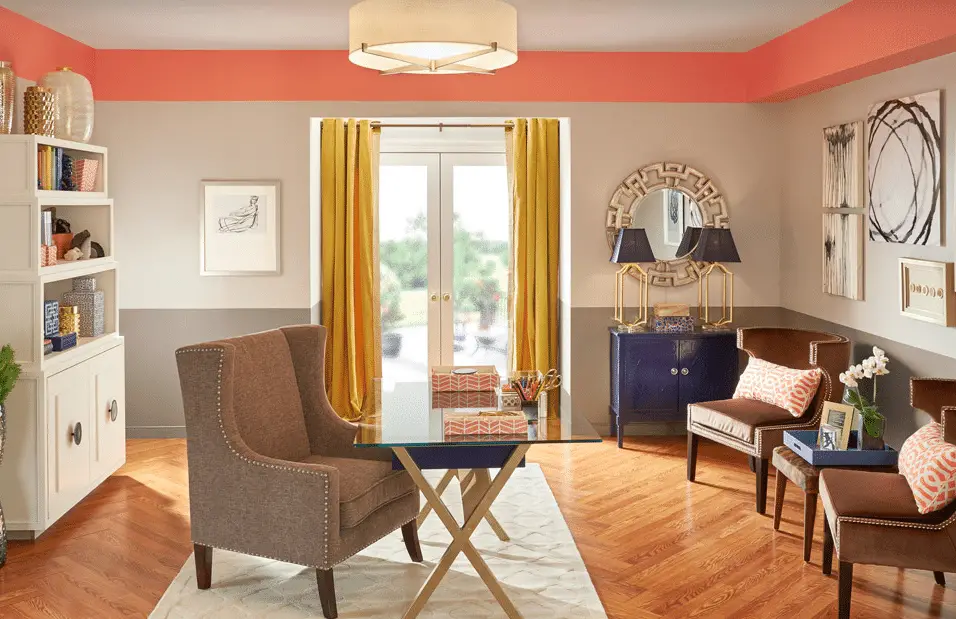What Is Ambient Lighting In Interior Design
Introduction
What Is Ambient Lighting In Interior Design: Ambient lighting provides the basic illumination in interior design. It aims to evenly distribute light throughout a space, eliminating harsh shadows and creating a pleasant visual experience. By carefully planning and implementing ambient lighting, designers can enhance the functionality, aesthetics, and overall ambiance of any room. The strategic placement of ambient lighting fixtures is also crucial in interior design. By considering the room’s layout, function, and architectural features, designers can create a visually appealing and comfortable space.
There are various techniques and fixtures used to achieve ambient lighting, such as interior design recessed lights, chandeliers, pendant lights, wall sconces, track lights, and ceiling-mounted fixtures. The choice of fixtures depends on the style and purpose of the space. As well as the desired lighting effect.Incandescent, fluorescent, LED, and halogen bulbs can reach the necessary brightness and colour temperature.
One of the key considerations in ambient lighting design is the balance between natural and artificial light. Incorporating natural light sources, such as windows and skylights, can significantly enhance. The overall illumination of a space during the daytime. This integration of natural light not only reduces energy consumption but also creates a connection between the indoor and outdoor environments. In large open areas, such as living rooms or conference halls. Multiple fixtures may be necessary to ensure even distribution of light. In contrast, smaller spaces may require fewer fixtures or the use of wall-mounted lights to optimize space.

What is interior ambient lighting?
Ambient lighting provides overall illumination and is meant to create a general and uniform lighting level. It’s the first layer of lighting and sets the tone of a space. That’s why it’s typically soft or diffuse, and often dimmable to accommodate day and nighttime settings.
The primary purpose of interior ambient lighting is to create a well-balanced and evenly distributed level of brightness throughout the room. It serves as the base layer of lighting and acts. As the foundation for other lighting techniques, such as accent and task lighting. Ambient lighting eliminates harsh shadows, reduces eye strain, and creates a welcoming environment for various activities and occasions.
There are several key factors to consider when designing and implementing interior ambient lighting. Lighting arrangement and kind depend on the space’s layout and use. The size, shape, and height of the room. As well as architectural features and furniture arrangement, influence the positioning of light sources to achieve optimal illumination.
Ambient lighting depends on the space’s style and purpose. Recessed lights, ceiling-mounted fixtures, pendant lights, track lights, and wall sconces offer general lighting. The choice of fixtures depends on the design aesthetic, ceiling height, available space, and desired lighting effect.
The selection of light sources and color temperatures is another important aspect of interior ambient lighting. Common bulbs include incandescent, fluorescent, LED, and halogen. Warm light with lower color temperatures (around 2,700 to 3,000 Kelvin) creates a cozy and intimate atmosphere. While cooler light with higher color temperatures (around 5,000 Kelvin) produces a brighter and more energizing effect.
What is an example of ambient lighting?
Ambient Light Examples:
Sunlight. Moonlight. Streetlamp. Overhead lights at a restaurant.
These lights are placed around the ceiling on purpose to spread light evenly and make the room a good place to relax, read, or host a party.
The size and shape of the living room will determine how many and where to put the hidden lights. For more light in bigger rooms, you may need a lot of recessed lights. These are set up in a grid and spread out evenly across the roof to make sure there is even lighting.
Pendant lights in a dining room are another form of ambient lighting. The Pendant lights hang from the roof and provide both general lighting and a point of interest. Pendant lights over the eating table make it feel like a cozy place to eat and get together.
For atmospheric lighting, the height of a pendant lamp is very important. The light should be bright enough so that you can see across the table and not block your view. Pendant lights can be dimmed with dimmer switches to set the mood for a romantic dinner for two or a party with lots of guests.
What is the use of ambient lighting?
Most of the time, ambient lighting is the main source of light in a place. It holds up all the other lights and gives off a nice, bright light. Most of the time, this lighting is used to make things easier to see.
Ambient lighting fills a room with light and makes sure that it is well-lit and easy on the eyes for a variety of activities. It gets rid of dark corners and shadows, making it easier and safer for people to move around the room.
The mood and atmosphere of a room depend a lot on the lights in the room. By changing the light’s color temperature, intensity, and how it’s spread, artists can create different moods that fit the space’s purpose. Warm, dim ambient lighting can make a space feel cozy and personal, while brighter, cooler lighting can make the space feel more alive and energized.
Ambient brightness makes it easier on your eyes and helps you see better. By lighting the whole room in the same way, it makes sure that people can see clearly without sharp contrasts or glare. This is important because you need to be able to see well in places like offices and homes.
Types of lighting
Accent and job lighting start with ambient lighting. Ambient lighting provides a foundation for these other lighting kinds to shine. It combines functional and attractive lighting.
Ambient lighting can enhance a space’s architecture. Designers can provide depth, texture, and visual appeal by putting lights near columns, arches, or textured walls. This strategy elevates the design and highlights the space’s uniqueness.

What is ambient in interior design?
Ambiance is the character, mood, attitude, or setting of a place, according to different dictionary definitions. It is mostly made up of what you see, hear, feel, smell, or touch in a place, or even how that space is set up or run.
Ambient design includes a lot of different parts of a room, like lighting, which is very important for setting the mood and improving the atmosphere. Ambient lighting gives off light all over a room, filling it with light and making it feel relaxed and welcoming. It gets rid of harsh shadows, eases eye strain, and makes it easy to move around and see in the room.
Colors and their combinations can greatly affect a room’s mood. Reds, oranges, and yellows are cosy, while blues and greens are soothing. Colors should match the space’s function and atmosphere.
Textures and materials enhance room style. Smooth textures like velvet or imitation fur make a space feel opulent and warm, whereas rough textures like exposed brick or concrete make it look industrial or country. Wood, metal, and glass improve a room’s appearance and feel.
Ambient design considers furnishings and space. Set arrange the furniture to maximize space and comfort. Pieces of furniture should fit your style and set the mood.
Plants and other natural items can make a room feel better. Plants make places look nice, clean the air, and bring people closer to nature. This makes people feel better and calmer.
What is ambient lighting called?
General lighting, or ambient lighting, illuminates a room. Its purpose is to evenly light a place, even if special lighting is needed.
This word emphasizes ambient lighting’s background role. It often sets the stage for accent lighting or job-specific illumination.
Although similar to “background lighting,” this word emphasizes outdoor illumination’s importance. First layer of light, then more can be applied.
This term points out that the main purpose of atmospheric lighting is to provide the main source of light in a room. It sets the base amount of brightness and is important for everyone to be able to see.
This lighting approach uses light focused up or toward a ceiling or wall to create soft, diffuse light. Background lighting is often indirect to avoid direct glare and offer a more soothing and comfortable light.
This word describes a room’s even lighting. It indicates that ambient lighting should come from all sides to ensure even brightness.
How do you decorate ambient lighting?
Chandeliers, pendant lights, wall sconces, flush or close-to-ceiling light sources, recessed lights, and others generate ambient lighting in a room. Using these parts and other parameters, you may create room ambient lighting.
Light sources should match the room’s concept. To match the decor, consider the lights’ size, shape, and style. Depending on your style, ambient lighting might be recessed, pendant, chandelier, wall sconce, or track lighting.
Place the light sources in a way that gives the whole room the same amount of light. Think about the space’s size, shape, and architecture when deciding where to put something. Aim for balancing lighting that gets rid of shadows and lights everything up evenly.
Ambient lighting
Mix different kinds of lighting, like accent and task lighting, with general lighting to make a layered effect. This gives the lights more depth and makes it more interesting to look at. Use dimmers to change the amount of light in the room to fit your mood or the occasion.
Consider the color temperature of the light source to get the mood you want. Warm light with lower color temperatures (around 2,700 to 3,000 Kelvin) creates a cozy and personal atmosphere, while cooler light with higher color temperatures (around 5,000 Kelvin) makes things brighter and more lively. Try out different color temperatures to see which one works best for the room’s style and purpose.
Install lighting settings, such as dimmer switches or smart lighting systems, so you can change the lighting as needed. This makes it easy to change the brightness level and create different settings and feelings for different activities or events.
What is different about ambient lighting?
Ambient lighting provides a bright, even glow, task lighting focuses on a specific task, and accent lighting highlights specific areas of a room.
Ambient lighting uses soft, diffused light sources to generate an equal glow. It filters off strong glare and direct light, making the environment more relaxing.
Ambient light underpins lighting design. It controls the area’s lighting and ambiance. Besides ambient lighting, accent or task lighting is added to grab attention and make the place more usable.
Balance between brightness and eye comfort is crucial when putting up outdoor lights. Its purpose is to provide enough light to see and move around without glare or discomfort. Dimmers adjust lighting brightness for different tasks or emotions.
Different jobs and settings can use different lighting. Room lighting can be adjusted in a house, store, or restaurant.
Ambient lighting design also looks at how natural and artificial light sources can work together. Windows, skylights, and light tubes are all ways that designers can bring in natural light and connect with the outside world. This combo saves energy and makes lighting more fun.
Is a lamp ambient lighting?
Since ambient lighting is the main source of light in a room, you usually want it to be very bright. This is true whether the main source of light is a ceiling light, a floor lamp, or a table lamp.
How bright and what color the light is depends on what kind of bulb is in the lamp. You can choose between LED bulbs, incandescent bulbs, fluorescent bulbs, and halogen lights. LED lights use less energy and come in a variety of color temperatures to fit different settings.
The lamp shade is an important part of spreading the light and making the mood you want. Think about the shade’s material, shape, and level of transparency. A lighter-colored cloth or paper shade will spread the light more gently, making the effect softer and more ambient.
How the light is spread depends on how high the lamp is and where it is put. Most of the time, it is best to put the lamp at a middle height in the room so that the light can spread out evenly. Try out different positions to find the best one for creating the atmosphere you want.
Multiple lamps can be used to make the lighting in bigger rooms even and balanced. By putting lamps around the room in a planned way, you can create a consistent amount of light and avoid dark spots or uneven lighting.

Conclusion
Ambient lighting fixtures, such as recessed lights, chandeliers, and wall sconces, are strategically placed to ensure even distribution of light. The integration of natural light sources, such as windows and skylights, further adds to the overall illumination and connection with the outdoors. The choice of light sources and color temperatures also plays a vital role in shaping the atmosphere of a room, with warm light creating a cozy feel and cool light providing a bright and energetic ambiance.
The importance of ambient lighting extends beyond aesthetics. It contributes to the functionality of a space by reducing shadows, improving visibility, and creating a comfortable environment for various activities. Whether it’s a residential home, a commercial establishment, or a public space, thoughtful implementation of ambient lighting can greatly enhance the overall experience of the occupants.
As technology advances, the world of ambient lighting in interior design continues to evolve. With the introduction of energy-efficient LED lights and smart lighting systems, designers now have more flexibility and control over the lighting design process. These innovations allow for dynamic lighting schemes, the ability to adjust color temperatures, and automated lighting solutions that adapt to different times of the day or specific activities.



